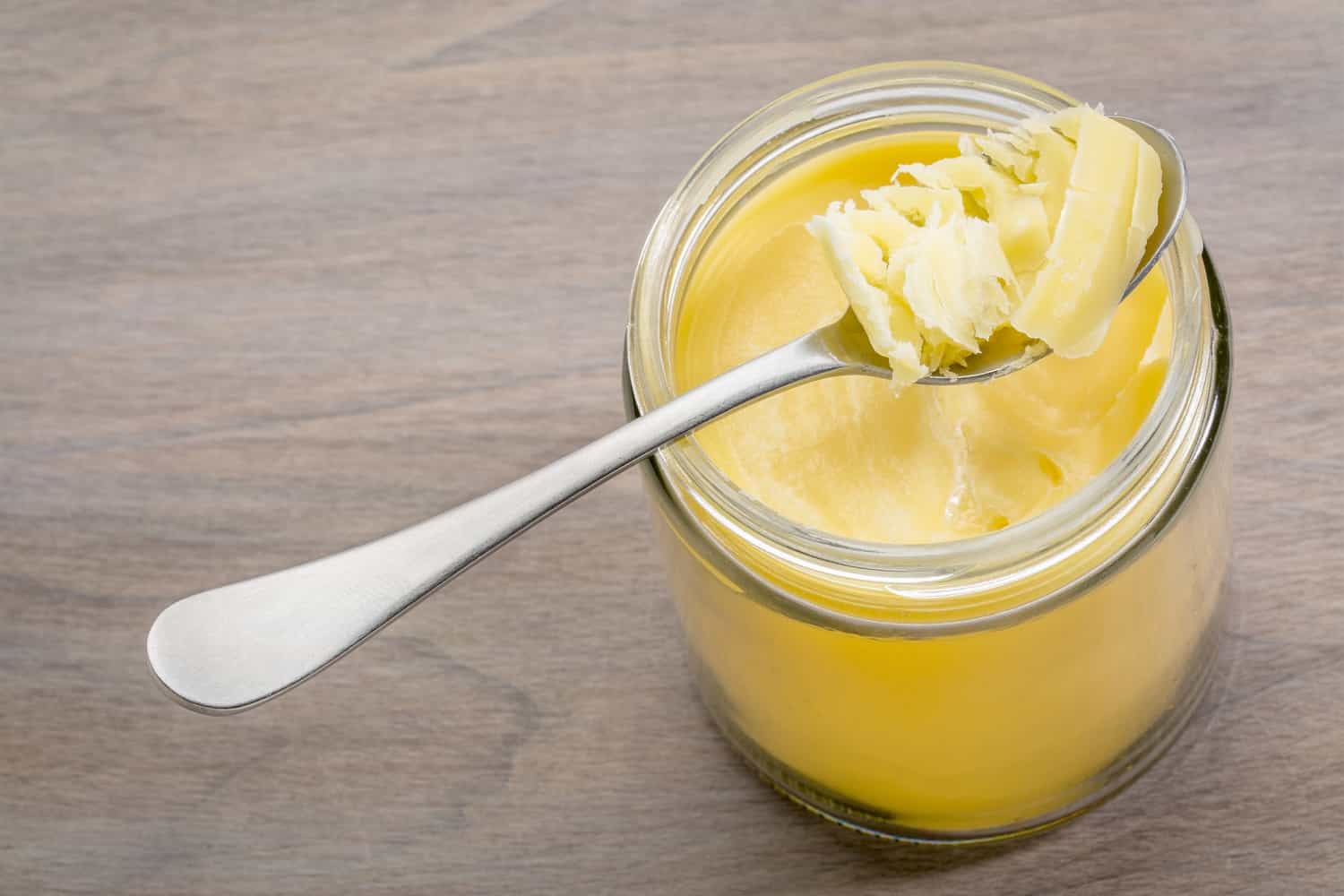“Ghee Substitute”, a traditional Indian ingredient, is a type of clarified butter. Butter from cow’s milk is simmered, removing any residues and byproducts, leaving behind pure butterfat. While this may seem unhealthy, in actuality ghee has many health benefits that standard butter does not. For people accustomed to using butter frequently, perhaps ghee substitute would be a healthier alternative in the long run.
Standard butter contains butterfats, milk solids, and water which when combined and consumed increases low-density lipoprotein content in the blood, or what is commonly referred to as “bad” lipids (or fats), LDL. Of course in moderation most deleterious effects can be minimized, however, consuming ghee substitutes in place of butter has not only been shown to negate negative effects of butter, it actually has a slew of health benefits that go along with it.
Ghee has been proven to lower LDL levels over time when eaten regularly. Because of this ghee has also been shown to improve overall heart health. Numerous studies have been conducted using small villages in India where heart health was monitored over long periods of time and then compared to the trajectory of overall heart health in Western countries.
Each study supported the assertion that ghee indeed did vastly improve overall heart health in populations where it was consumed regularly. Ghee is also easier to digest for most people since the milk protein derivative casein is removed during clarification.
So ghee is similar to butter, and it has some impressive health benefits, but what is it really? What dishes include ghee, and how does the taste differ from the traditional butter that I enjoy and use daily? Traditional ghee does not include salt in the recipe and can be said to taste much less savory than a standard stick of salted butter. However many ghee recipes and pre-packaged grocery items do contain some salt, although less than standard butter.
Ghee is used in Indian rice dishes (like byrani) and some cooked vegetable dishes but can be used in a wide variety of dishes as a direct replacement for butter. Ghee can be spread on toast, bagels, used as an oil/butter Ghee Substitute in your pan, or even added to non-traditional dishes to add health benefits and a creamy taste. If you’re looking to introduce yourself to ghee and have a test run of the flavor, try ordering a ghee dish at your favorite Indian restaurant.
For those of you who enjoy experimenting with new healthy recipes, you can make your own ghee at home! Ghee has a very high smoke point making it a great replacement for vegetable and nut oils. The possible uses for ghee are nearly endless and it’s relatively easy to make.
Ghee Substitute Recipe
- One pound of high-quality butter (whether it’s salted or not is up to you but traditionally unsalted butter is used)
- Fine mesh strainer
- Cheesecloth
- Glass containers for storage (mason jars work great)
- Deep or high lipped pan (to avoid being splashed with hot butter)
Begin by adding the butter to the pan and begin to melt on medium heat. When the butter begins bubbling, lower the heat slightly (you’re looking to achieve an even simmer). You’ll begin to see curd-like white foam forming at the top of the butter. Continue simmering for about 25 minutes after lowering the heat. Use the strainer to carefully remove the white curd from the top of the melted butter and then pour the butter into the mason jar(s) through cheesecloth to remove the fine excess curd.
It is as simple as that! You now have a delicious, homemade butter Ghee Substitute with health benefits! Try experimenting with your ghee by substituting it in place of butter or even cooking oil and see how ghee can benefit you!















